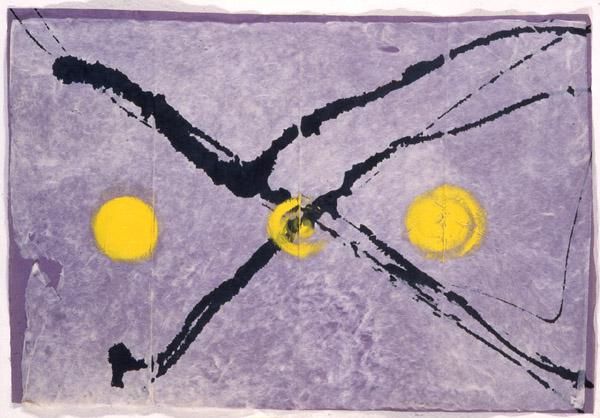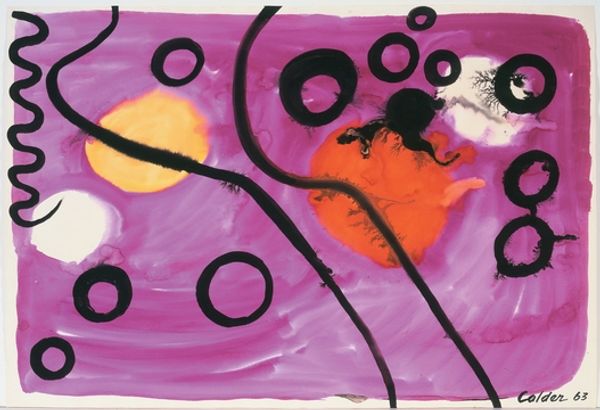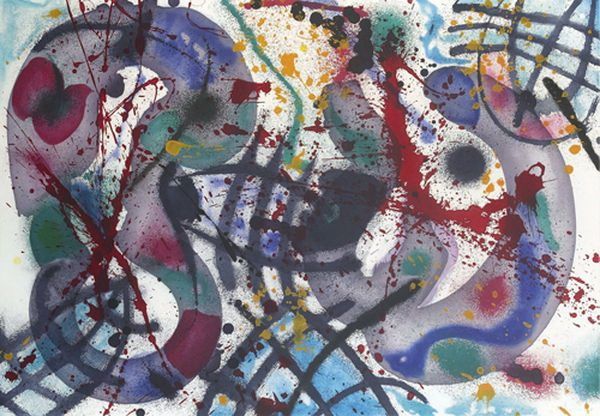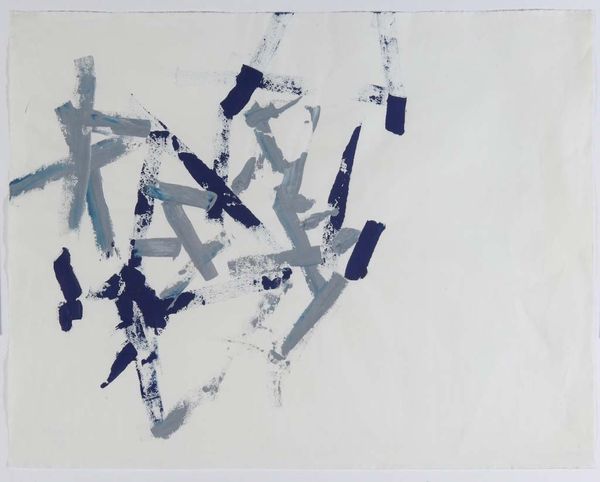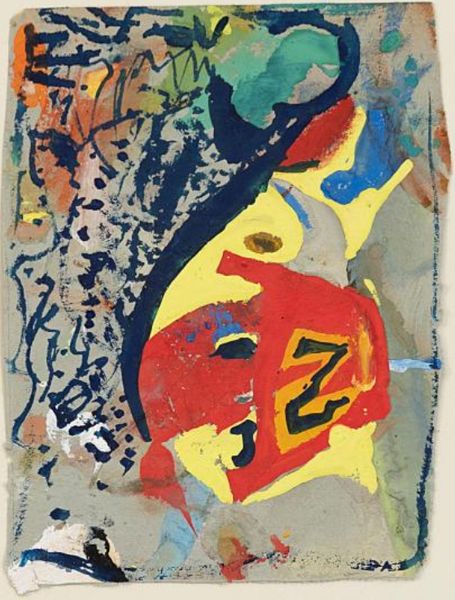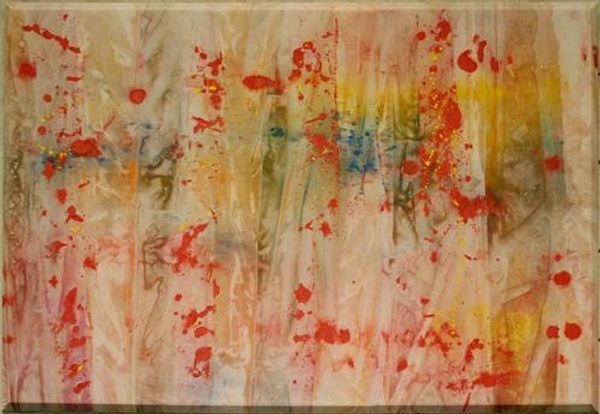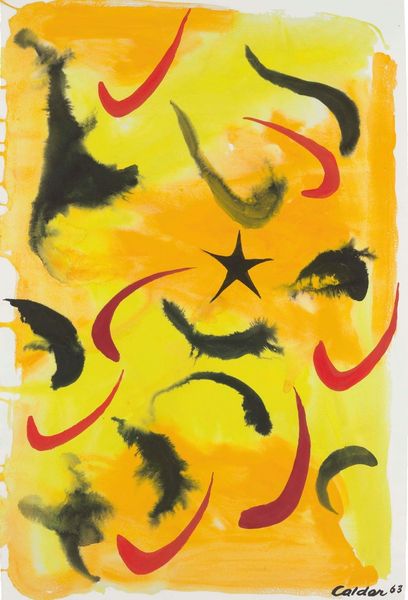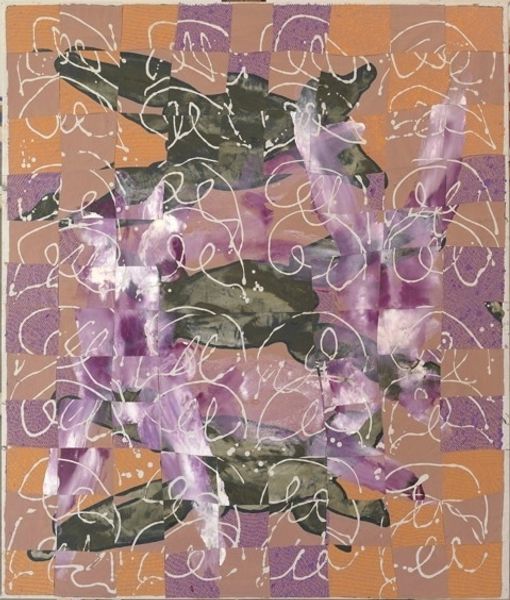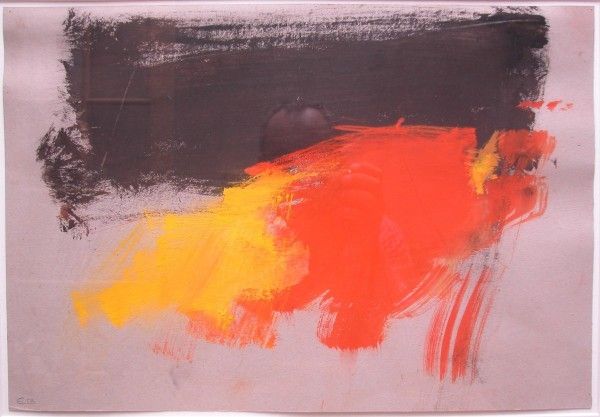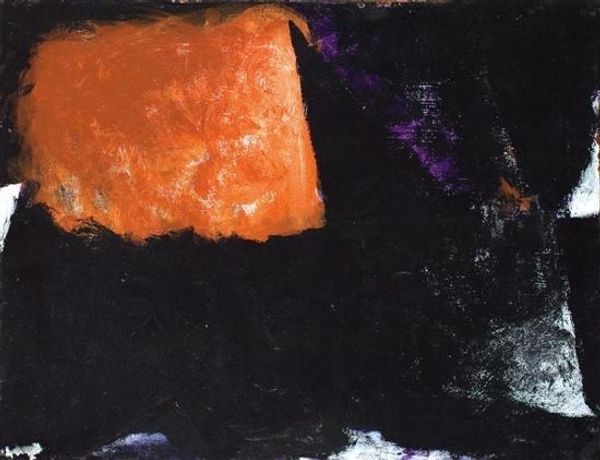
Copyright: Luciano Bartolini,Fair Use
Curator: We're looking at "Inner Space," a watercolor created by Luciano Bartolini in 1987. Editor: My first impression is one of controlled chaos. There's this pale lilac ground, then bursts of intense red, black and yellow marks seemingly floating across the surface. It has an improvisational energy. Curator: Indeed. Bartolini's abstract expressionism sits comfortably between the gestural freedoms encouraged within impressionistic landscapes and mark-making reminiscent of calligraphic or purely linear works. His embrace of materials such as watercolor blurs the traditional lines separating high art from craft. It begs questions about how art is perceived. Editor: And where art is made and shown. Considering Bartolini was active during a time of shifting political and economic landscapes, I wonder how the making and viewing of his works responded to these contexts. What spaces was it intended for and who got to decide this? Curator: He moved within certain networks, exhibited in established galleries, often spaces reflecting bourgeois taste. Even the use of watercolor speaks to a readily available, less industrial medium. Yet there's a real tension at play between the freedom of the artistic gesture and the boundaries of the art world that sought to define his work. The material invites play, experiment; does it always have to resolve itself? Editor: Definitely. The beauty here is its unpolished nature. It doesn't pretend to perfection. The imperfections become almost part of its emotional impact. How these three blots communicate visually across the lavender field reminds me of raw emotion put on display, or perhaps kept to oneself in 'inner space'. It does invite some thought about the economy of its production; an art accessible in process perhaps, if not in exhibition or even consumption. Curator: Thinking about the socio-political context offers insights into both the intent and impact of his visual language and the media employed to make it. It emphasizes an accessible form open for interpretation, much like "Inner Space." Editor: And reminds us that art's value is tied to process and context just as much as it is to the image it projects, challenging the viewer to ponder how materiality relates to socio-economic experience.
Comments
No comments
Be the first to comment and join the conversation on the ultimate creative platform.
